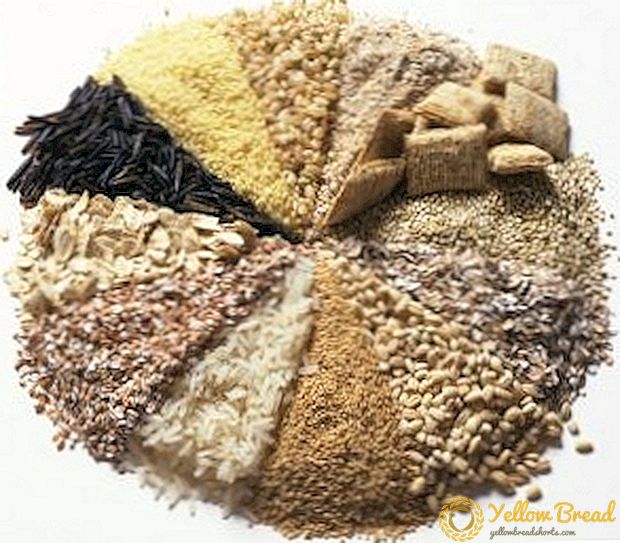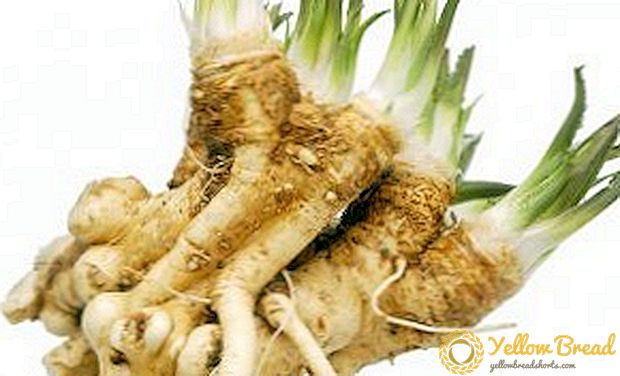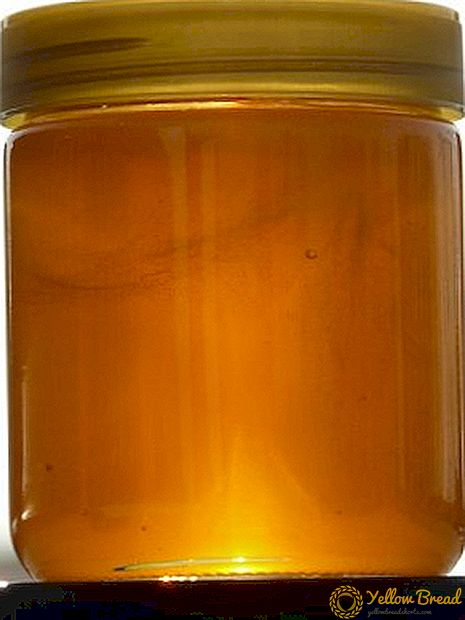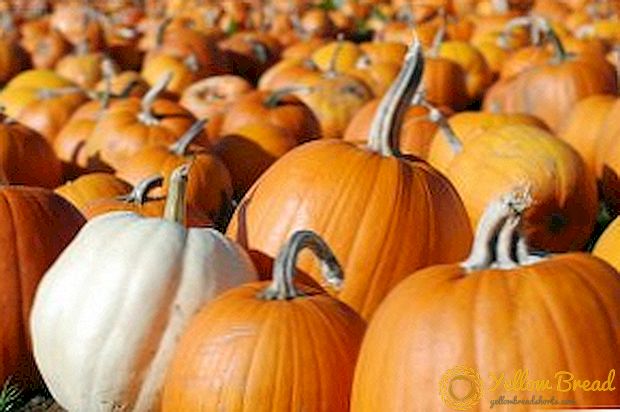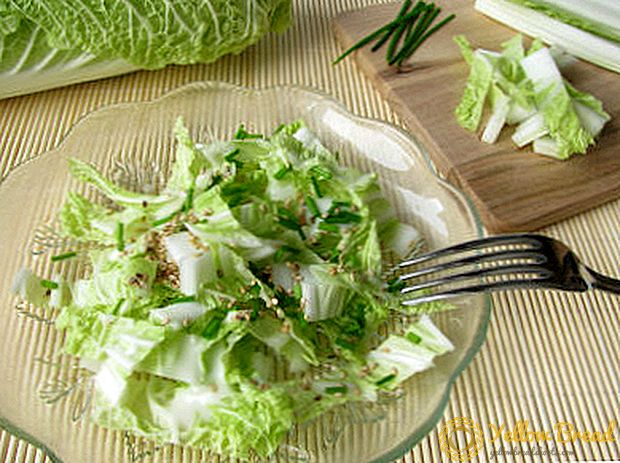 Pruning fruit trees is a necessary undertaking. His goal is to improve the plant, to direct its growth in the right direction and to achieve abundant fruiting. Pruning in no way contradicts, but on the contrary - it keeps up with the laws of nature, relying on them. In fact, it is an imitation of natural processes, which is one of the activities for the care of cultivated garden trees and does not allow them to run wild.
Pruning fruit trees is a necessary undertaking. His goal is to improve the plant, to direct its growth in the right direction and to achieve abundant fruiting. Pruning in no way contradicts, but on the contrary - it keeps up with the laws of nature, relying on them. In fact, it is an imitation of natural processes, which is one of the activities for the care of cultivated garden trees and does not allow them to run wild.
Thanks to competent pruning, each branch of the tree receives the necessary amount of light and its own space, without interfering with others. Also pruning is used as a therapeutic measure for various diseases, breaks due to natural processes.
Finally, by cutting off old dead branches, you free the tree from excess load and allow it to direct its efforts to growth and development, and you save yourself from the danger of breaking off dry branches that can collapse at the wrong time and place.
In this article, we will look at the types of pruning of fruit trees, find out when it is better to prune them - in spring or autumn, in summer or in winter, and also study videos for beginners.
- Types of pruning
- Rejuvenating
- Formative
- Regulatory
- Recovery
- Sanitary
- Supportive
- Determining factors and time limits for pruning
- In the spring
- Summer
- In the autumn
- In winter
- What to do after trimming
Types of pruning
Garden pruning is a procedure of great importance for the state of the plants and the quality of the crop. It regulates the metabolic processes within the tree, redistributing life resources and directing them to the desired parts of the tree.
Together with other agrotechnical methods pruning balances all parts of the tree:
- roots;
- wood;
- leaves;
- fruit.

In the course of existence, the fruit tree is constantly changing, growing at different speeds at different times, directing forces:
- to strengthen the root system;
- on increasing the green mass;
- on intensive growth;
- for flowering and fruiting;
- to protect against diseases;
- preparing for a period of calm and so on.
Based on the intended goals, share six types of trimming:
- Rejuvenating - removes aging and prolongs life.
- Formative - simulates the appearance of the crown.
- Regulatory - regulates fruiting.
- Recovery - leads the plant in tone.
- Sanitary - heals the tree and eliminates the excess load.
- Supportive - Refreshes and rewards with new powers.

Rejuvenating
After the tree begins to bear fruit, after 2-3 years it is necessary shorten too long branchesthat "wake up" adventitious buds, limit the growth of branches, form a crown, relieve the plant from dead fragments and give it the opportunity to recover. This measure is also applied if the flowering activity has decreased.
In addition, such an event will significantly improve the aesthetics of the appearance of the tree. The rejuvenating pruning involves the removal of thickening and hanging branches and unnecessary top shoots, from located in the right place make skeletal and semi-skeletal branches.Such a procedure can be carried out both in autumn and at the end of winter and in the beginning of spring approximately every three years.
Formative
With the help of formative pruning, the gardener models the appearance of the tree, the load on its skeletal part, and allows the plant to develop evenly.
Forming trim targets:
- the acceleration of the onset of flowering;
- yield increase;
- well-groomed appearance;
- ensuring uniform access of the sun to the crown;
- increase endurance;
- Convenient access to branches for harvesting and care.
Formative trimming is not a one-time event, with the help of this technique for several years the crown of a tree is gradually formed by uniformly placing in it well-lit branches throughout the skeletal part of the tree. An adult tree that has lost a skeletal branch as a result of a crash, aging, or death, or has acquired a graft, may also need it.

Regulatory
Using Regulatory Trimming the already formed crown is preserved in the desired form, branches are provided with uniform illumination, excess young shoots are removed. With its help, the gardener observes a balance of growth and yield of fruits and creates conditions for the renewal of wood and the growth rate.
It is held from late February to April, as well as from August to September, is actively used in industrial gardens.
Recovery
If the plant has suffered for some reason, pruning will help return it to the possibility of further development. With her help form a crown of acceptable size, achieve a balance of its component parts, control the number of growing shoots and improve light. After such an intervention, the usefulness returns to the crown, it becomes able to grow and bear fruit. 
During the event, remove diseased and broken branches. Apply it also:
- to trees injured mechanically or frostbite;
- if the tree has not been trimmed for a long time and now has a rather neglected form;
- when excessive crown overgrowth has occurred, interfering with neighboring plants and impeding harvest and necessary care;
- if the light has become difficult to break through the dense branches of the crown and the lower branches are deficient in sunlight.
Sanitary
Sanitary pruning is done as planned treatment and as an ambulance. Like most therapeutic measures, it should be carried out as needed when the plant is sick, got dried or broken branches, or frostbite them.
This is done at any time of the year, the only obstacle is the frosts, and the best time is the beginning of summer, when the tree awoke. Regular and annual sanitary pruning will improve the health of the tree, give it a decent appearance, thinning the crown, prevent infectious and fungal infections.

It should be remembered that an overly radical procedure would entail consequences in the form of a too thickened crown. It should also be considered with the age of the tree and its size.
Supportive
Maintenance pruning held regularly during the existence of plants. It helps support their growth and health, as well as fruiting, pursuing the following goals:
- not release growing branches beyond the borders of the formed crown;
- contain the crown in a state of permeability to the sun;
- not to expose large branches;
- to rid the skeletal branches of the young shoots that plague them;
- maintain the health and tone of the tree for active growth and stable fruiting.

Determining factors and time limits for pruning
The main burden on the gardener falls at a time when the frosts have already passed, and the growing season has not yet begun, that is, from the end of February and during almost the whole spring. During this period, you no longer need to be afraid that the frost will damage the freshly cut plant, and at the same time it will not lose nutrients along with the cut off parts.
In some cases, the possibility of pruning up to the flowering period.
Early spring is the time when fruit trees are pruned. The first "swallows" in this matter are apple trees, and indeed seed seeds. The stone fruit is started a little later. 
The determining factors for this or that type of pruning are:
- tree species;
- condition of fruit plantations.
Apple trees - the most stable cultures, which are less affected by adverse conditions. The work on the recovery, rejuvenation and correction begins with them, and ends with them.
Branches of apple and pears in frost are susceptible to freezing at the ends, this kind of damage is better to clean closer to mid-May.
With cherry, cherry and plum the basic approach is as follows:
- strong cherries or cherries should be pruned after harvest;
- if the cherry is weak, circumcision in the winter will help - this will stimulate the growth of new shoots in the spring;
- pruned pruning is recommended during the harvest process, either in the middle or end of June.
Pinching shoots in the summer, to save the plant power for more important things. Autumn pruning of fruit trees - sanitary.
In the spring
It is possible to start pruning fruit trees in the spring after the main frost has subsided, but it will be correct if the gardener waits for time, when the sap flow is about to begin.
This time is considered the most appropriate, because the plant tissues during this period are already prepared for the processes that are about to begin to occur in them.The cut in such conditions will heal as quickly as possible - of course, if it is produced correctly and processed properly. If a formative procedure is required, it is quite possible to wait, or even get by in another year.
So, the basic rules that should be followed by every gardener:
- the earliest when you can begin to cut is the time when the main frosts are gone, but it is better to wait for the moment of readiness for the beginning of the movement of juices;
- The cut is made above the eye growing from the crown outwardly, making it smooth and even from the inside to the outside.
- skeletal branches, which the trunk continues, remain longer;
- weak trees are cut short, leaving two or three eyes, on strong leaves from eight eyes and more.
Summer
The concept of "summer pruning" includes several techniques carried out with green shoots that did not have time to acquire the bark, for the purpose of thinning the crown for access to sunlight:
- nip - in order to grow shoots from the awakened buds, which will have time to prepare for wintering;
- pin hole - for development in the uterine branch of the full formation of wood that will help speed up and improve fruiting;
- breaking down - for removal of valueless for the crown of young shoots, transferred easily and does not need to be processed;
- breakdown - rarely carried out reception in order to give the growing branches the desired direction;
- trimming - to receive a flower bud near the beginning of escape, already in the year when it began to grow.

In the autumn
Autumn pruning is carried out mainly for sanitary purposes; or, if you plan to rejuvenate the tree in the spring, leave the protective links. This technique is also good at this time of year for very old and very neglected apples. Pruning trees in the fall begins then when leaf fall comes.
If you cut off the one-year escape, the frosts can damage not only the place where the cut is located, but also a decent area around, and this is certainly not a safe healing.This tree will be hard during the winter, which is bad for the kidneys in the spring. The risk is the higher, the north the garden is located.
However, if the need for sanitary pruning has arisen, the above considerations lose their relevance, vital indications are important here, as they say in medicine. The tree affected by the disease must be treated so that the infection does not spread further, and moreover it does not go to neighboring plants. In such cases, the amputated affected parts must be burned.

Fruit trees do not relate very well to autumn pruning, and some may die, or get very sick after it - for example, plum, cherry or pear. On young saplings, it also will affect not the best way.
In winter
Winter pruning is more appropriate in the southern regions, where frosts are rare and winters are mild. She is good because:
- plants get less stress because they hibernate;
- made cuts are more accurate and high quality;
- it helps that there are no leaves at all, and all branches are very visible.
When a tree is damaged due to strong wind, icing of branches or excessive snow severity, and, moreover, it threatens with further splitting or fracture, the gardener does not have to ask whether it can be cut. It is necessary to cut off, only it is necessary to wait for the first opportunity, namely - reduction or absence of frost.

What to do after trimming
Any circumcision leaves on itself a wound surface from which moisture evaporates. It is also, in fact, an open gate for all kinds of infections. Small sections can heal on their own, but large areas, from 2.5 cm in diameter, need treatment.
No matter how sharp the saw or the hacksaw, which made the cut, in any case, the surface after it will not be smooth, so you need to clean it with a sharp garden knife. Then - treat with special wound healing; for example, garden pitch or oil-based paint.
You can not use any other paint, in addition to oil - solvents included in their composition, detrimental effect on the tree, penetrating into its fabric through a fresh cut. For application, use a spatula, brush or cut knot.

The smeared wound begins to heal from the edges, forming a cow roller on them, which after processing increases at a speed of 2-3 cm per year, unlike 1 cm, if it is not processed.
Whatever manipulations you make with a tree, remember that this is a living organism that can be harmed if you do not have enough knowledge. You need to know the processes and laws by which it carries out its livelihoods and, interfering in them, understand what you expect from your intervention. A tree, like any living creature, will always thank for the care and bestow a rich harvest.

